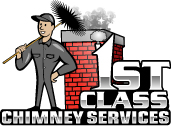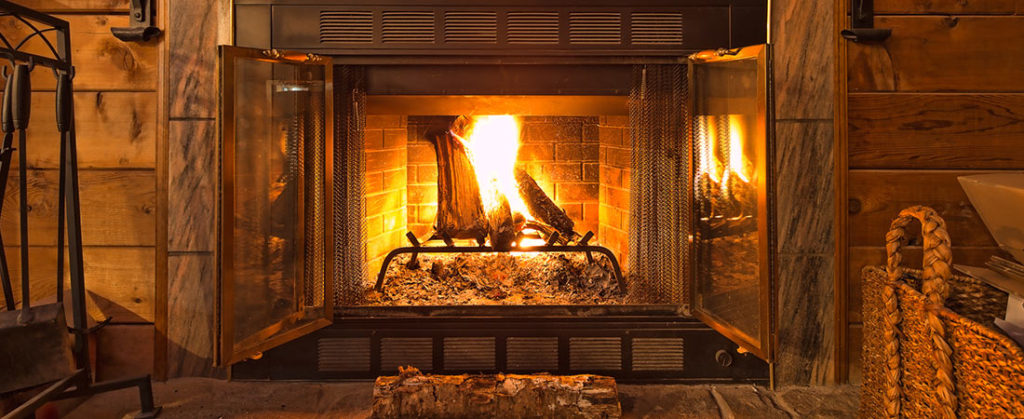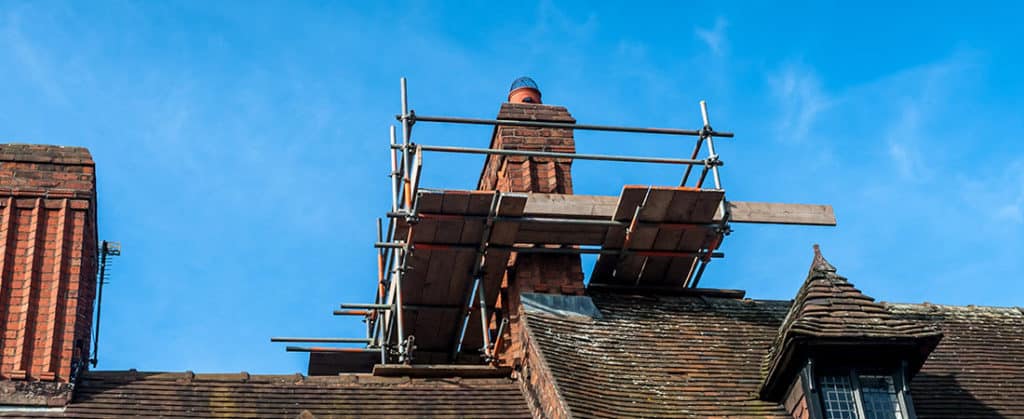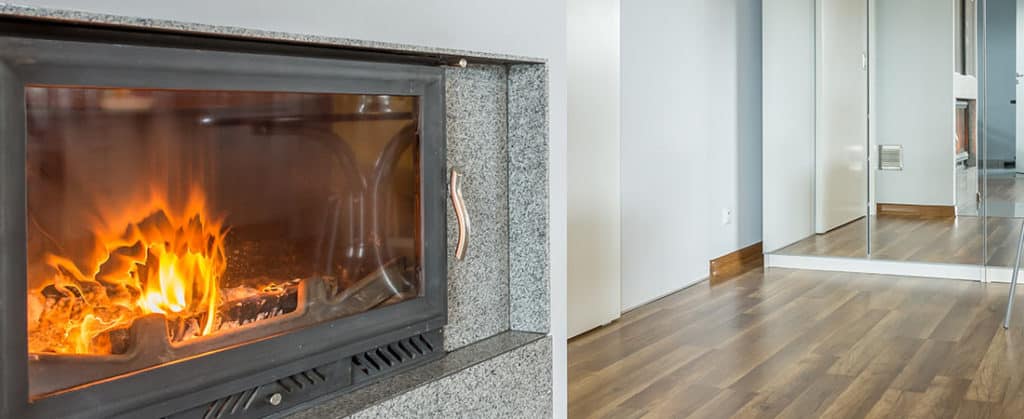When the chimney smokes up the house, it makes the house uncomfortable to live in and gives you more work as you have more spaces to clean. According to chimney contractors, the chimney will send smoke into the house due to various reasons such as:
The indoor-outdoor temperature differential is too low
The temperature differential between indoor and outside temperatures determines the strength of the chimney draft. The stronger the draft, the bigger the temperature difference; the weaker the draft, the smaller the temperature difference.
When it’s chilly outside, but warm inside, hot air and fire by-products ascend the flue to meet the cold air out. When the temperature outside is roughly the same as inside, the hot air and smoke will float in the firebox. In other cases, they will enter the room rather than rise up and out of the chimney.
When the flue is cold, hot air will float rather than rise to the top of the chimney, so proper drafting will not occur.
If your fireplace only smokes when it’s warm outside, a low indoor-outdoor temperature differential is most likely the blame.
Check your thermostat and the weather forecast to improve drafting, and start a fire only when the difference between the inside and outdoor temperatures is at least 20 degrees.
To avoid a cold flue, light a rolled-up newspaper and hold it in the flue above the damper (just above the firebox) for one to two minutes before lighting a fire on below-freezing days or after the fireplace has been inactive for several months.
By pre-warming the flue, you increase the temperature differential between the flue and the outside, enhancing draft and lowering smoke levels in the house.
Water is seeping into the flue.
Rain or snow can soak into an unprotected flue, lowering the air temperature in the firebox and blocking its ability to climb, potentially causing back-puffing.
If your fireplace emits smoke just when it rains or snows, you may have a water seepage problem. To avoid a damp flue, have a chimney cap installed by a Chimney Safety Institute of America (CSIA) certified chimney sweep.
This covering, erected around the outside mouth of the flue, keeps water (along with animal nests and detritus) out of the chimney. It strengthens the draft and prevents indoor smoke.
The flue is blocked
A flue can get clogged by leaf debris, animal nests, or creosote build-up. These impediments can reduce or prohibit smoke from passing from the firebox to the outdoors via the flue, resulting in back-puffing.
More significantly, when the temperature in the flue rises sufficiently, creosote build-up or debris can ignite a chimney fire, causing significant structural damage to your home.
Observing nests or debris with a flashlight up your chimney flue can alert you to a larger obstruction in the flue. If you notice either, contact a CSIA-certified chimney professional to inspect it and, if necessary, clean it to remove creosote accumulation, nests, and other debris to prevent back-puffing.
Your home has a negative air pressure.
A high chimney draft necessitates neutral air pressure, which means that outside air enters the home at the same pace that interior air escapes it, resulting in equal indoor and outdoor air pressure. This permits fire by-products to depart the flue as outside air enters it.
In a house with negative air pressure—typically newer, energy-efficient homes well-sealed with weather stripping or caulking—more air enters than escapes, resulting in higher outside air pressure than inside air pressure.
The increased air inflow from outside drives smokes down the flue until it reaches your home.
If your fireplace is smokey, open a window or door while the fireplace is on to see if this is the situation in your home. If this reduces or eliminates indoor smoke, your home most likely has negative air pressure.
To fix the problem, get in touch with a mason and have them install an air supply vent. This rectangular grate brings air from outside to the fire, regulating indoor-outdoor air pressure and allowing fire by-products to exit the flue.
Your chimney has a design flaw.
If none of the above-mentioned issues are to blame for your smokey fireplace, the culprit could be the chimney or fireplace itself.
Proper drafting necessitates constructing a specific size of chimney and fireplace components. A flue that is too tiny, a chimney that is too short, or a lintel (horizontal support above the firebox entrance) that is too high are all examples of what can cause a weak draft and a smoky fireplace.
While changing these structural components is frequently too expensive, you can install a smoke guard in front of the fireplace as a remedy.
This bar at the top of the fireplace opening reduces the amount of smoke entering the home by limiting the amount of fire by-products.
For the best outcome, ensure the guard is installed by a professional who knows what they are doing.
Tricks to avoid a smoking chimney
You can take several measures to prevent your chimney from smoking. They include:
Use safe fuel, kindling, and tinder. Only use well-seasoned hardwood or CSIA-approved logs. Use dried twigs or branches and torn old newspaper or pine cones as tinder for kindling. Avoid unseasoned firewood or cardboard, as they might produce a large volume of smoke that your chimney cannot adequately expel.
Use the top-down burn technique. This technique calls you to vertically place the heavy logs in the firebox, then light them.
This fireplace lighting method produces a hot, fast-burning fire that emits little smoke and mist.
Place the grate in the firebox with at least a few inches surrounding it. When the fireplace grate is too close to the front of the firebox, it produces more smoke, and you don’t want this.
After using the firebox, remove the ashes. Scoop the residual ashes into a metal container when the firebox has cooled fully. This is because ashes from the previous burn can cause the fireplace to create additional smoke.
Annually, have a CSIA-certified chimney sweep Ellicot City inspect your chimney. This skilled service keeps your chimney clean and clear of obstructions or structural damage.



